How to Make Cheese Out of Coconut Milk
Making coconut milk from dried coconut is very easy to do! All you need is dried coconut, water, a blender, a sieve, and some cheesecloth! From Erica Kastner of Buttered Side Up.
So, why on earth would you go through all of the work of making your own coconut milk if you can just go buy a can of it? Well, there are several reasons that might prompt you to do it yourself. Here are just a few:
- Many commercial coconut milks have additives that some people prefer (or need) to avoid. If you want to control what goes into your coconut milk, make your own!
- It's more affordable. A can of conventional coconut milk retails for around $1.50 to $2.00 (or more!). I can make ORGANIC coconut milk for about $0.70 per can.
- Sometimes you run out of canned coconut milk, and it's nice to be able to whip up a batch to save your recipe.
- It's a fun new cooking challenge to try out!
Today I'm going to share two ways of making your own coconut milk. They each have their advantages, which I'll discuss in a bit.
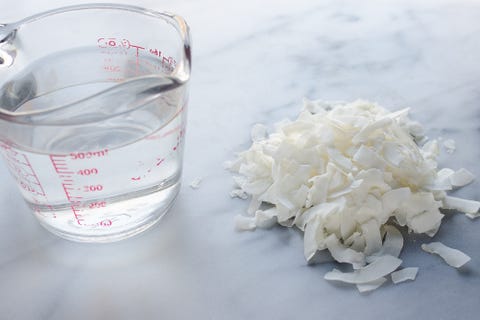
Let's start with the easiest (and cheapest) way to make coconut milk: with dried coconut. It only requires 2 ingredients: water and desiccated (dried) coconut!

You want to make sure you're buying unsweetened dried coconut. Those run-of-the-mill sugary bags aren't going to cut it here. You want it to have just one ingredient: dried (or desiccated) coconut. I buy chipped coconut because it's awesome for topping curries, stir-fries, salads, etc. and kids love it as a snack. But you can use the smaller, flaked coconut as well.

Put the coconut in a blender and pour some very warm water on top. You definitely don't want the water to be boiling. That would be bad for your blender! You just want it really, really warm or slightly hot. Does that make sense?
Put the lid on the blender and hold it down with a kitchen towel to prevent any spills or burns. Blend the whole thing for 5 minutes.
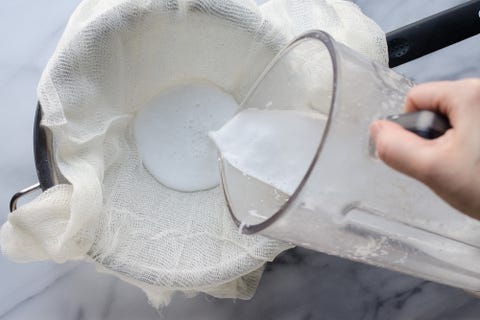
Pour the mixture through a cheesecloth-lined fine mesh sieve.
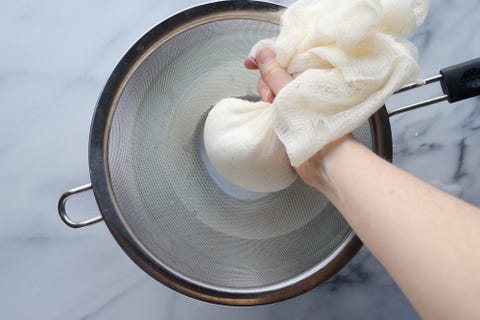
Squeeze out as much liquid as you can. Be careful if the water you used was really warm! You can use tongs to squeeze out the water to prevent burns.
You could also use a special nut milk bag if you prefer.
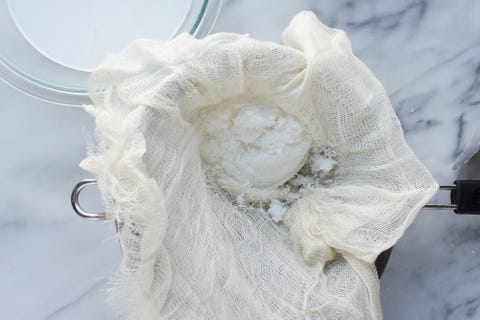
If you like, you can save the coconut meat and add a little at a time to smoothies, baked goods, etc., or just compost. I figure that I've already extracted a lot out of the meat, so I just toss it or compost.
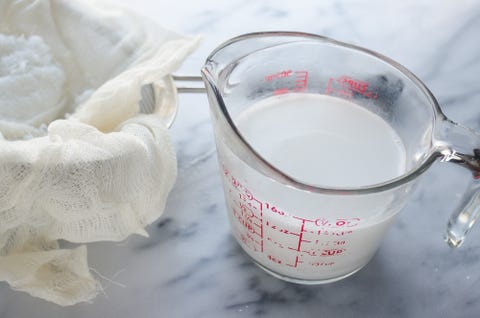
And there you have it: extremely easy homemade coconut milk!
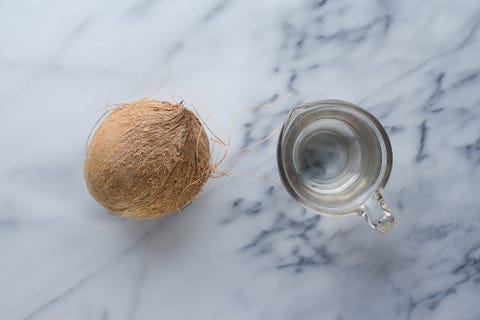
The second method is definitely more labor intensive, but boy is it ever fun! You'll need a fresh, mature (brown) coconut and water.
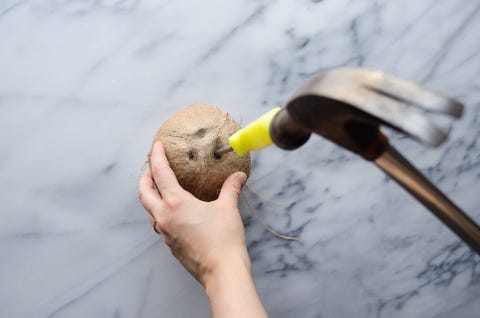
The hardest part of making coconut milk with a fresh coconut is getting at the meat!
Start by punching holes in the "eyes" of the coconut. You can do this with a corkscrew, screwdriver, etc. I think the screwdriver is the easiest way to do this. Simply hold it in place over an eye and gently tap it with a hammer until it punctures through to the meat. I usually find that only 1 or 2 of the eyes are actually big enough to puncture. But that's okay!
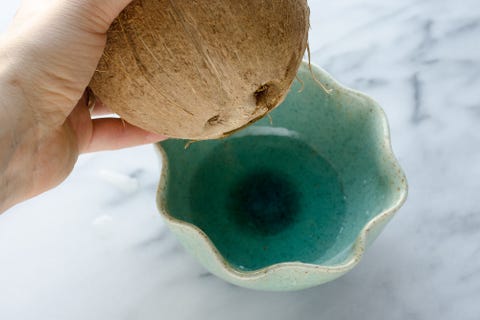
Now shake the coconut water out into a bowl or over the sink. I think the water from a mature coconut tastes nasty, so I just discard it.

Now comes the violent part.
I have found that the easiest way to crack open a fresh coconut is with a hammer. I have tried using the back of a big knife, and it just didn't do as good of a job. Also, I recommend holding the coconut in your hand versus whacking it while it's sitting on the counter. It will just fly all over the place if you do that! Keep in mind that your hand will be absorbing some of the force of the blows, so you may want to use gloves or hold the coconut with a kitchen towel. It can sting a bit when you whack the coconut!
Also keep in mind that the coconut will crack best when whacked along the equator. Now whack that coconut soundly until it's cracked all the way around.
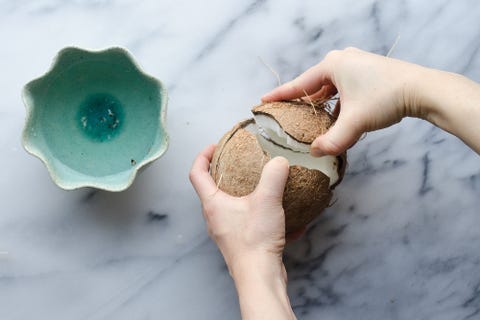
Then peel the two halves apart with your hands.
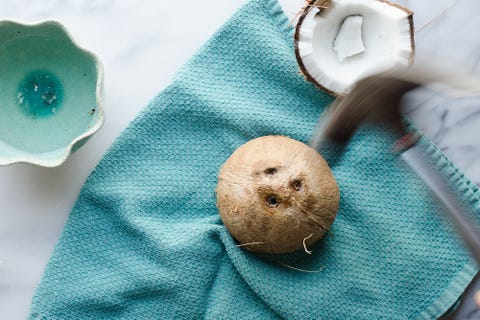
The next hurdle is getting the flesh to break away from the shell. If you're really lucky, the flesh will come out when you crack the coconut in half. If this doesn't happen, place a half on a kitchen towel and rap it soundly with the hammer several times all around.
This makes it a lot easier to pull the meat off of the shell. Think of it kind of like smashing a clove of garlic to make it easier to get the skins off. Keep rapping the coconut if you can't get the meat out. Be careful not to whack and ruin your counters! You could also do this outside.

You might be able to just pry the meat out of the shell with your hands.
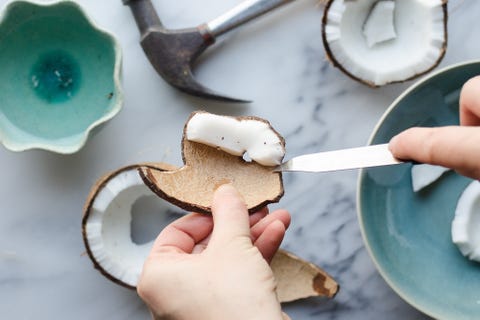
Or you may need to use a paring knife to pry the meat off of the shell. Just be careful not to cut yourself!

Whew! Give yourself a pat on the back. That was hard work!
I like to rinse off the coconut meat since it usually has bits of shell attached to it. There's no need to remove the brown "skin" that's on the back of the coconut meat. But if you'd like, you can peel it with a vegetable peeler. This does make for a whiter coconut milk, but it's more work that it's worth in my opinion.

Place the coconut meat in a blender and pour very warm water on top. Blend for 3 minutes.

The mixture will seem very thick, but that's okay!
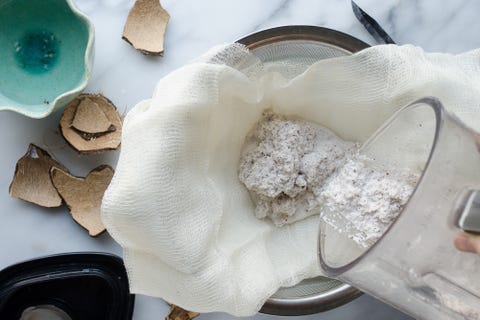
Just like before, pour the blended coconut meat through a cheesecloth-lined fine mesh sieve.
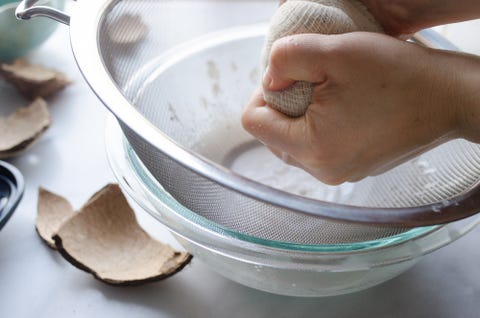
Squeeze out as much liquid as you can. You'll be surprised by how much you get out of the coconut puree!

Again, you can save, discard, or compost the leftover coconut pieces.
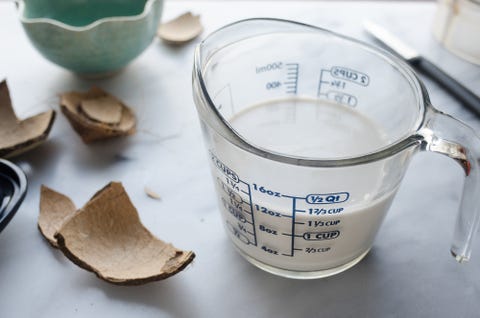
I usually get about 1 1/2 to a scant 2 cups of coconut milk out of a fresh coconut, which is about the same amount as a can of coconut. I pay about $2 per coconut, so it's more expensive than using dried coconut, which only costs about $0.70 per "can."
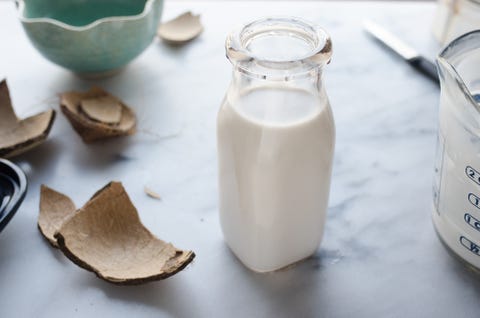
Making coconut milk from a fresh coconut is definitely a project. But I think every coconut lover should give it a try at least once. The milk you get is unlike any canned coconut milk. It's so fresh tasting (well, duh).
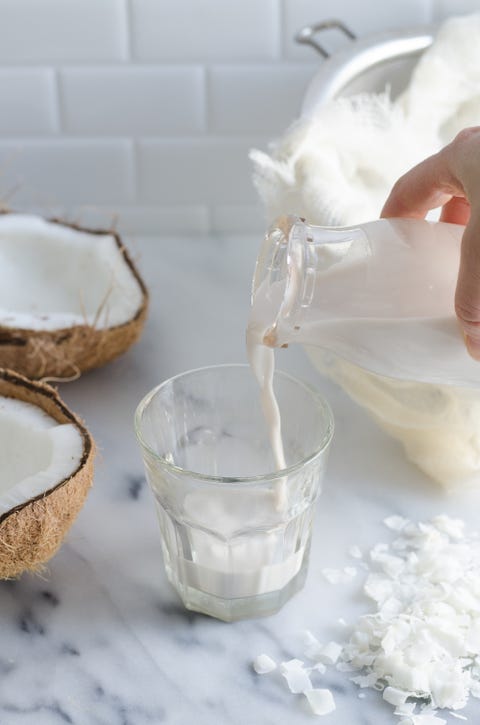
I like both methods for making coconut milk, but the dried coconut definitely has a few advantages: it's easier, cheaper, and more convenient. You can keep a bag of desiccated coconut in your freezer to have on hand whenever you need to make coconut milk.
The fresh coconut method definitely wins for the coolness factor, and the taste is something to be experienced. Not that the dried coconut milk tastes bad (my son actually prefers it), it's just different. The fresh coconut milk has a distinct flavor, so if you like a more mellow coconut milk, go for the dried coconut method.
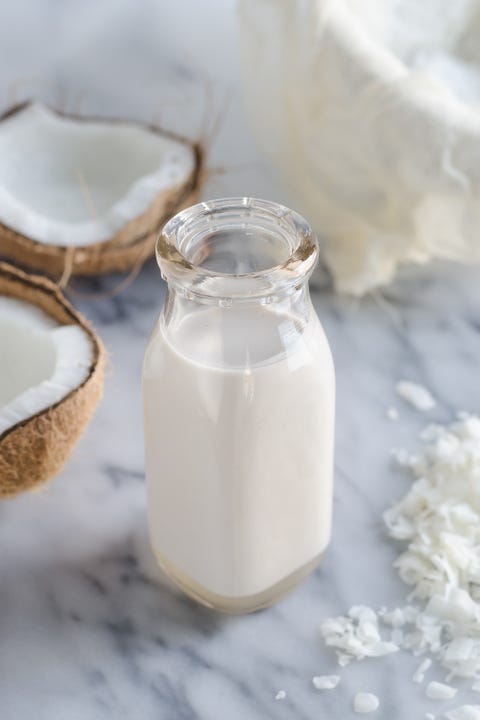
As I've mentioned, both methods make about the same amount of milk as what you'd get from a can. You can stretch the coconut milk by adding more water, but keep in mind that it will be more like "lite" than "regular" coconut milk.
Now I'd like to know: What's your favorite use for coconut milk? I love it in my Coconut and Chicken Curry Soup recipe, and it's also wonderful for making coconut rice.
This content is created and maintained by a third party, and imported onto this page to help users provide their email addresses. You may be able to find more information about this and similar content at piano.io
How to Make Cheese Out of Coconut Milk
Source: https://www.thepioneerwoman.com/food-cooking/recipes/a97983/how-to-make-coconut-milk/